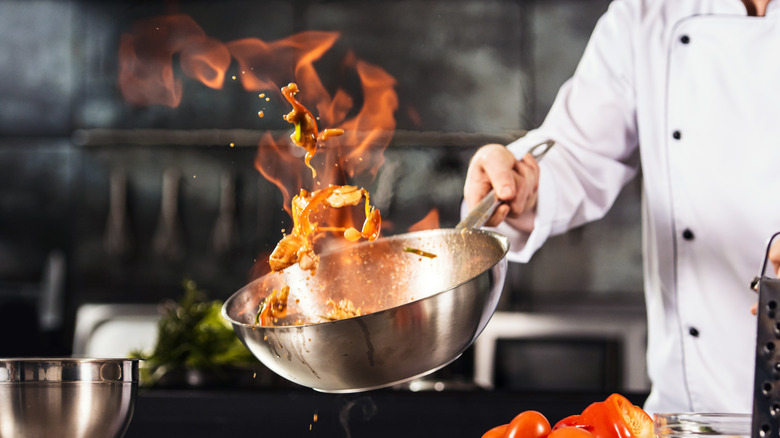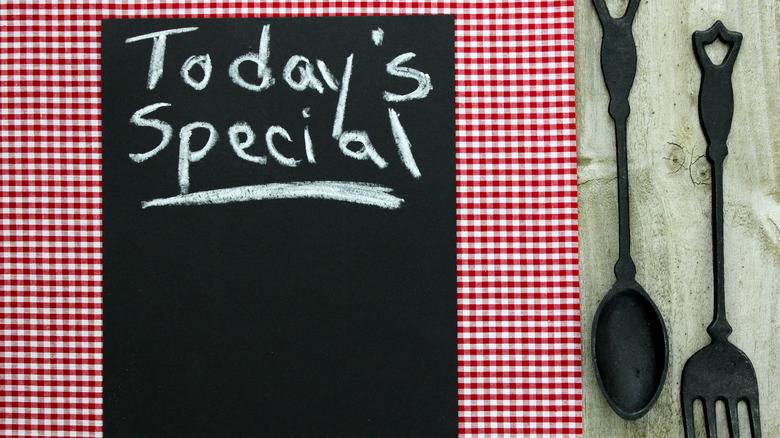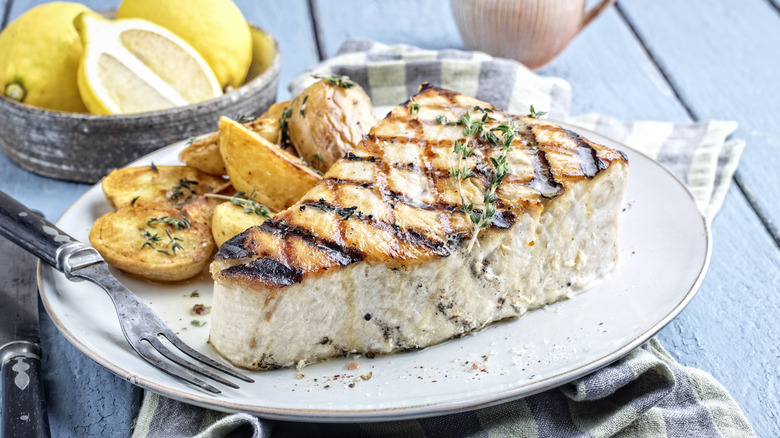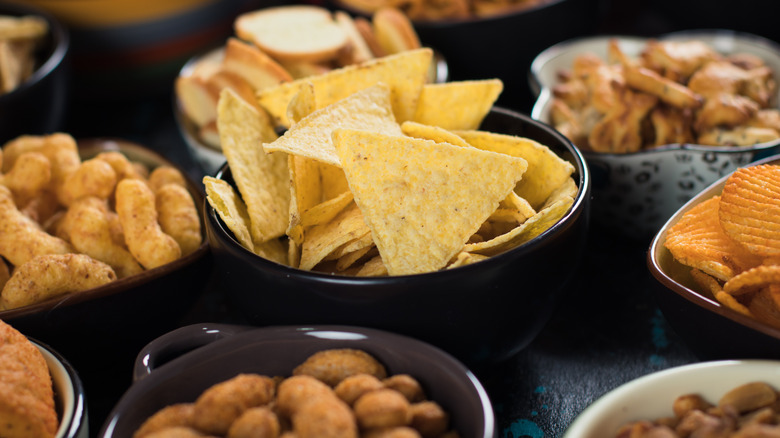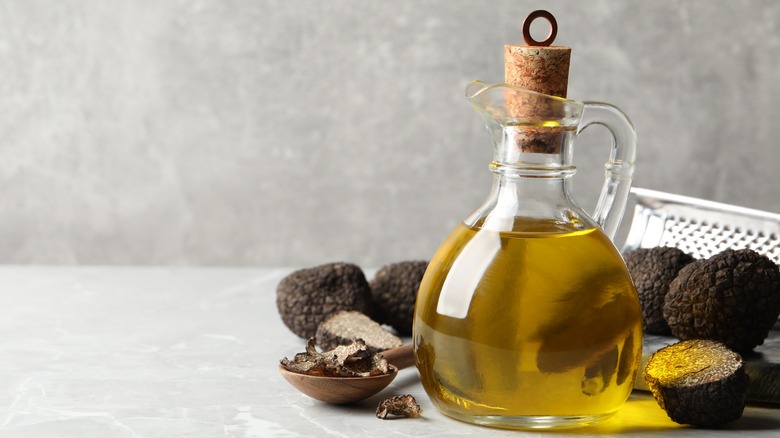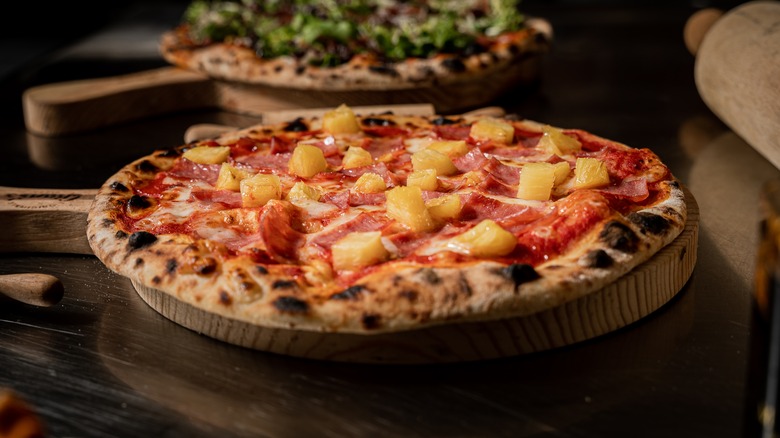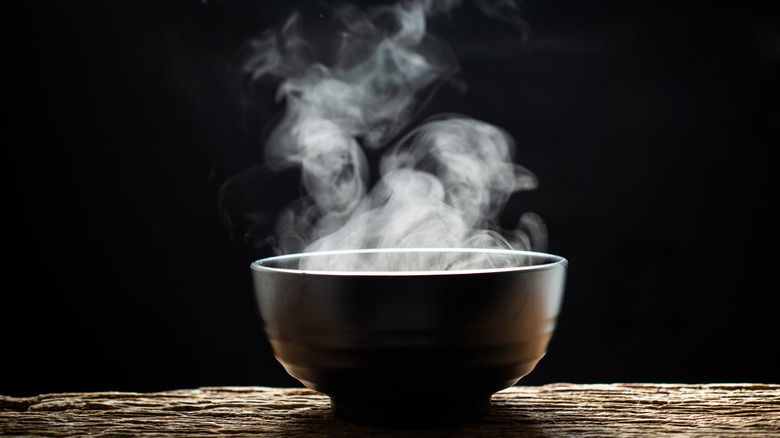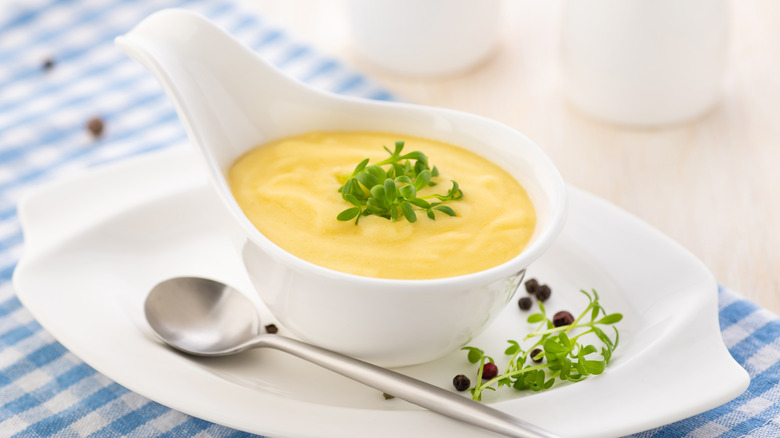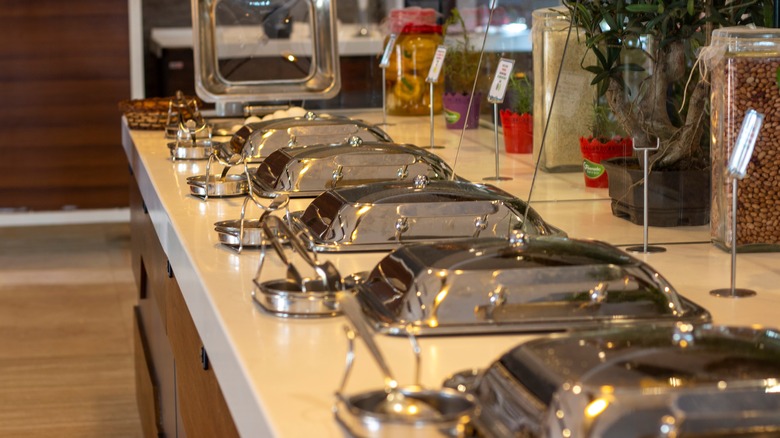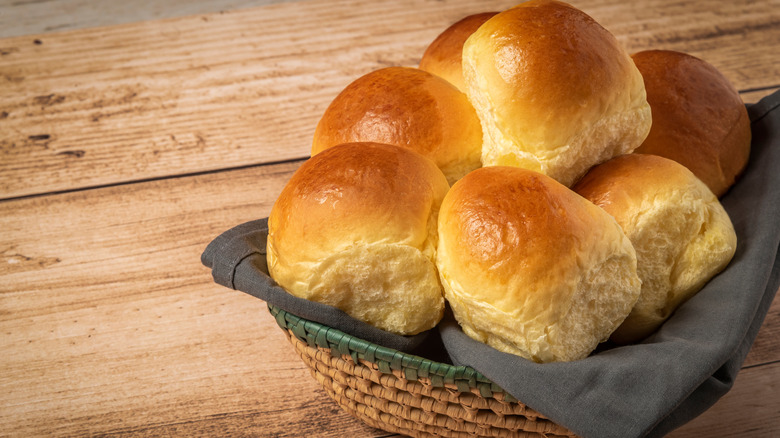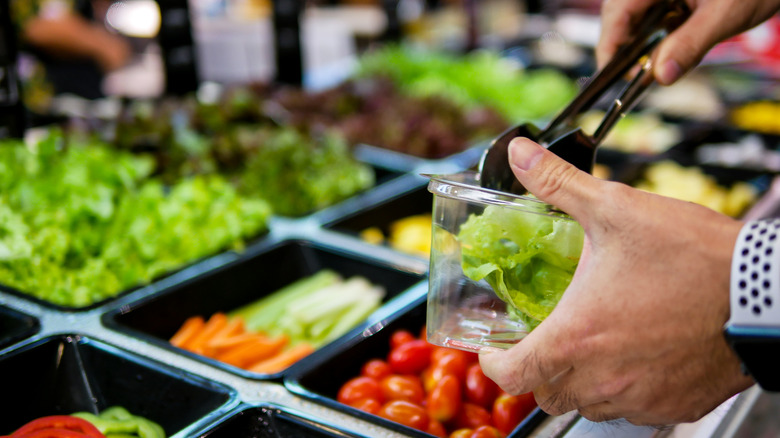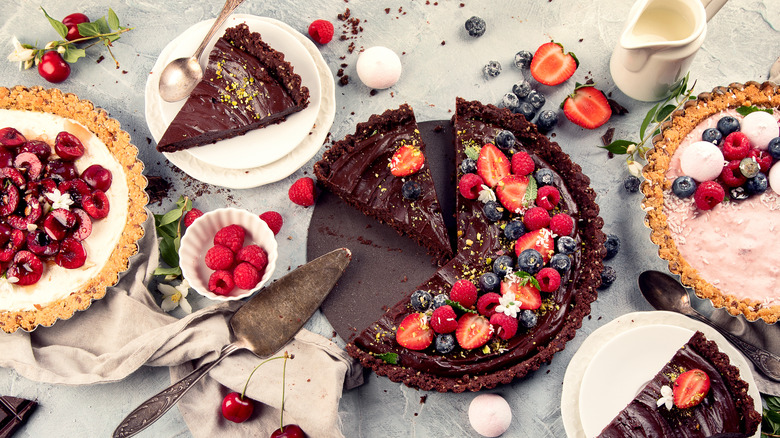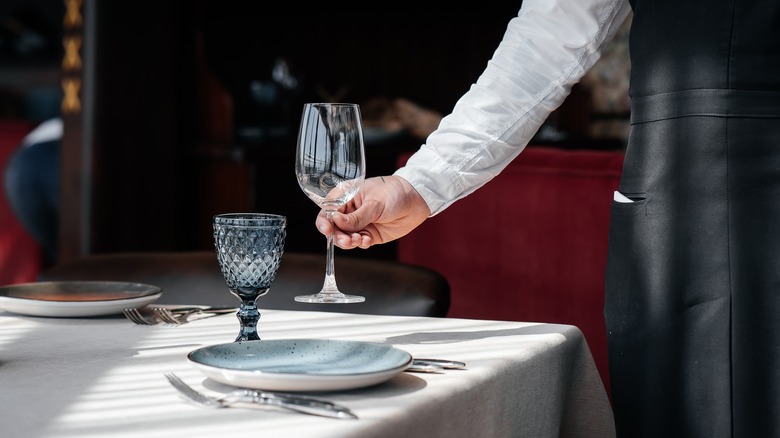What Chefs Will Never Do When Dining Out
Everyone loves to eat out at restaurants, whether it's for a special occasion or a weekly night out. But for professional chefs who learn all of the basics in culinary school, the dining-out experience is different.
Chefs train for years learning how to perfect their knife skills, deglaze a pan, and the importance of temperature, salt, and acid. And they don't just learn about the ins and outs of kitchens, they also unearth the secrets of the restaurant world. Secrets like how often things are cleaned, what happens to less-than-stellar cuts of meat, how shellfish is stored, and which dishes are at high-risk for food poisoning. Chefs and kitchen staff understand how commercial kitchens function, which affects how they dine out and what they order.
Lucky for you, chefs want diners to have a positive dining experience too. They're revealing secrets from the kitchen to give customers insight into the restaurant world, as well as an understanding of why chefs avoid certain items when dining out.
Order the specials
To the typical hungry diner, the daily specials sound, well, special. But in reality, these dishes are often made with ingredients that are about to expire. The restaurant business is difficult, and it all comes down to the bottom line. Every ingredient needs to be accounted for, and wasted ingredients mean wasted money. So to save money and keep ingredients out of the garbage, restaurants create special menu items, Modern Restaurant Management explains. Chefs Gordon Ramsay and Anthony Bourdain both never order from the specials menu and they think diners shouldn't either, especially if it's an extensive list.
However, there are a few exceptions when the specials live up to their name. Anything seasonal is a safe bet since these foods are only available for a short time, making it natural to turn them into a daily special. Apart from seasonal foods, some chefs use the specials as a blank canvas to play with the menu and show off their culinary creativity. If a chef is creating a new menu or revamping the restaurant's offerings, they may use this temporary menu to test various dishes with diners. Savvy diners should keep all of these points in mind and eye the specials with caution.
Eat fish on Mondays or swordfish anytime
Fish can be a popular menu item; it's healthy and full of protein (via WebMD). Many novice home chefs find it intimidating to prepare at home, preferring to order a tasty filet when dining out. While fish is generally safe to order, unfortunately, there are times when it's not the best choice. In Anthony Bourdain's essay "Don't Eat Before Reading This" in The New Yorker, he lets readers in on a fishy little secret: Fish is freshest on Tuesdays and Fridays when it's delivered. He recommends avoiding the fish altogether on Sundays and Mondays when it's the end of the stock.
The type of fish you choose for your dinner plate is also something to consider. Many people avoid options like marlin, ahi tuna, and swordfish due to excessive mercury (per Verywell Fit), but professional chefs avoid swordfish for another reason. Anthony Bourdain explains that he skips this option because it has parasites and bacteria and can make diners sick if not properly prepared (via The Travel).
Ask for foie gras
Foie gras, the controversial French delicacy, is not for the faint of heart. In French, the name means fat liver, and that's exactly what it is — the fattened liver of a goose or duck. Although it is considered a local culinary specialty, the inhumane production has caused a backlash against it outside of France.
Making foie gras involves force-feeding animals, leading to its ban in the U.K., and similar proposals to ban it in New York and California. Many animal-loving celebrities like Kate Winslet and Ricky Gervais have voiced their support for the ban, according to PETA UK. Popular chef Nigella Lawson has also spoken about her distaste for foie gras, announcing that she won't cook or consume it. Following her lead, Trish Deseine, an Irish chef with a French following, has denounced foie gras too; you won't find it in her kitchen or on her plate either (via The Guardian).
Nibble on bar snacks
Chefs and kitchen staff work hard and play hard. It's no surprise to see them relaxing at the bar with a drink after their shift or on their days off. But one thing you won't find them doing is reaching into the complimentary bowl of bar snacks. They say no to those salty peanuts, pretzels, and popcorn because they are well aware that the bowls don't get washed and replaced as often as they should, creating a health concern.
In the film, Along Comes Polly, Ben Stiller's character breaks down the facts that restaurant staff already know for the audience. Free bowls of salty snacks encourage more drinking which inevitably leads to using the restroom. Unfortunately, many people don't wash their hands as well as they should. Once they dig their dirty fingers back into the snack bowl, they end up contaminating it. Lack of proper hygiene is one of the major causes of food poisoning (via Healthline). As a result, anyone who works in a restaurant, from the chef to the busser to the host, knows to avoid the bar snacks.
Drizzle truffle oil on a meal
Truffles are a sophisticated delicacy adored throughout the culinary world. These expensive treasures are fungi that grow hidden in the dirt near tree roots (via Truffle Farms). They impart an earthy umami taste and are a prized ingredient among many professional chefs. Their deep flavor makes them special, and their scarcity makes them a high-ticket item.
However, truffle oil doesn't have the same elevated status because it doesn't even contain any truffles. It's no secret that it is made in a laboratory with pungent chemicals (per Eataly), making it a universally hated condiment by chefs.
Gordon Ramsay called it "one of the most pungent, ridiculous ingredients ever known to chef[s] " (via The Los Angeles Times). Meanwhile, Martha Stewart told Today that she "would never use truffle oil." Alton Brown didn't mince words when giving his opinion to Grub Street, simply stating: "Truffle oil sucks." And Anthony Bourdain included it on his list of hated foods, referring to truffle oil in a clip of The Tonight Show as "about as edible as Astroglide and made from the same stuff."
Ask for pineapple on pizza
Sweet juicy pineapple is perfect for desserts and cocktails, and for some people, it's an excellent addition to pizza. But for many chefs, a piping hot pizza topped with this tasty tropical fruit is an abomination.
Well-known pizza chef Chris Bianco doesn't like pineapple on pizza, according to his chat with Mel Magazine. His dislike of the combination isn't so much due to traditional pizza rules but more about the acidity overload from the tomatoes and pineapple.
Meanwhile, popular and notoriously outspoken chef Gordon Ramsay doesn't just dislike pineapple on pizza — he doesn't believe they should ever be paired, per a Twitter post. Despite his hate for it, he capitalized on the popular pizza to raise money for charity in 2017. According to The Daily Edge, he promised to eat a Hawaiian pizza if he reached a donation goal for the Great Ormond Street Hospital charity. Luckily for the charity, the donations poured in, and poor Ramsay was forced to eat it up live on social media.
Order a well-done steak
Food preferences are a matter of personal taste; some people like to dip their french fries in ketchup, others in mayonnaise or ranch. But despite personal food preferences, most civilians and chefs alike agree that the perfect steak should be between rare to medium and never well-done.
In an essay in The New Yorker, Anthony Bourdain explains that while he would never eat a well-done steak, he appreciates the few people who do like their meat charred, overcooked, and dry. He goes on to praise those unsuspecting restaurant patrons who are unknowingly helping the restaurant save money. He points out that cuts of meat that are less than ideal due to tough connective tissues, or older cuts that are close to ending up in the garbage, are set aside and reserved for diners who request a well-done steak. Ultimately, they are helping the restaurant save money and prevent waste. So while he wouldn't put it on his own plate, from a cost perspective, he is thankful for those who do.
Sip the soup of the day
Savory soups are the perfect start to a meal and also make a great stand-alone lunch. But before you order soup in a restaurant, you should hear what Gordon Ramsay has to say about it. He told Town & Country that the soup of the day is often yesterday's special.
Soup is an easy way to stretch food, and any savvy restaurateur knows that the only way to stay afloat and keep the lights on is to reduce costs and eliminate food waste. And since soup is a low-ticket item that's easy to make with leftovers and kitchen extras, it's rarely given proper attention in a commercial kitchen. Old veggies and dicey chunks of meat get boiled down to make a new soup, and then the process is repeated and repeated again. Chefs and restaurant staff know the drill and avoid ordering soup in restaurants, instead sticking to entrees and appetizers.
Eat anything with hollandaise sauce
You have probably had hollandaise sauce in a classic eggs benedict recipe. The brunch staple consists of two poached eggs with smoky slices of Canadian bacon on an English muffin covered in velvety hollandaise sauce. This French sauce is made by whisking butter, raw egg yolks, and lemon juice, and is a morning favorite for many, excluding the chefs who make it.
In an excerpt from his book "Kitchen Confidential," Anthony Bourdain gives readers an insight into the dangers of hollandaise sauce and why diners should be wary of it (via The Guardian). He explains that the sauce is not just decadent, but it's a bit dangerous too. Since it is always made in advance, it creates a suitable environment for bacteria and foodborne illnesses.
While Bourdain explains his dislike of the classic sauce, he takes the opportunity to go behind the curtain with brunch in general. He muses that brunch is a way for restaurants to charge more for simple breakfast food. He goes on to divulge that kitchen staff newbies are often thrown into the brunch shift since experienced chefs avoid working this time slot. Ultimately, it affects the quality of brunch food.
Hit the buffet line
If you are concerned about food safety — and you should be if you dine out regularly — you are probably already suspicious of the buffet table. These setups are crammed with various dishes that sit out in the dining room for hours. Despite heat lamps, steam trays, and ice, the temperature of the food is difficult to maintain.
Cold foods start to warm up and hot foods cool down until both are in the danger zone. According to the U.S. Department of Agriculture (USDA), the danger zone for food is between 40 F and 140 F, and it only takes a couple of hours to get there. If you consider that buffets entail a line of diners constantly shuffling through, lifting lids, and letting heat escape, the issue is clear.
Even though buffets technically make their jobs easier, many chefs and kitchen staff know they're not worth the risk, and choose to avoid them entirely. Gordon Ramsay expressed his distaste for buffets to his Twitter followers, so don't expect to ever see him waiting in line.
Touch the bread bowl
The complimentary bread basket is another item that chefs and kitchen staff avoid. According to a Reddit user in the industry, not all diners polish off the bread from the basket on their table. Instead of throwing out the free staple, many restaurants just reuse the same bread and simply warm it up for the next table. Even though it's against the U.S. Food & Drug Administration Food Code, restaurants still do it. Just think of all the hands that have touched the same bread you find on your table. Insiders in the restaurant world always avoid the bread basket because of this practice.
It's probably a good thing to skip the bread anyway and save space for your entree. Many diners make the mistake of mindlessly reaching for the free starchy carbs, overdoing it, and becoming so full they can't enjoy the meal they actually came for in the first place. Dine out like a pro and avoid the bread basket.
Consume green salad or visit the salad bar
Piling your plate high with salad seems like it would be a healthy option. But in reality, salad bars are similar to buffets as far as health and safety. Food is left out at room temperature, while diners pick through lettuce and salad toppings protected by a flimsy sneeze guard. It's easy to see why many restaurants have eliminated salad bars altogether because they are simply gross. Salad should be cold and crispy, not lukewarm and lifeless. Chefs and kitchen staff agree that staying away from salad bars is a good idea to avoid foodborne sickness.
But what about ordering green salads? Los Angeles chef Kayson Chong explains to Reader's Digest that he avoids ordering simple green salads in restaurants, but it's not because of food safety; instead, it's because green salads are boring. That's not to say that chefs don't eat salads; they just don't order them in restaurants where salads are not the star of the show and consequently, don't receive much attention.
Indulge in dessert
Restaurant chefs have set skills; they can sear a steak, spice a sauce to perfection, and make even the simplest dish irresistible. But despite all of their amazing culinary prowess, many are not trained in the art of desserts. It's common for restaurants to outsource their elaborate desserts to places that specialize in them. According to The Washington Post, many restaurants don't even want diners extending their stay with a slice of cheesecake and coffee because it isn't cost-effective. They would rather turn over the table for new guests who are hungry and order expensive dinner items or drinks.
So if you want a well-made dessert and want to keep the kitchen happy, you should go to the source and get your favorite after-dinner treat from a place that specializes in it. This principle doesn't just apply to desserts. You should never order oysters in a diner or pizza in a steakhouse either.
Send food back
Chefs are familiar with the hard work that goes into creating a meal and an excellent dining experience. When the tables are turned and they are the ones dining out, their insider knowledge generally makes them respectful restaurant patrons. You won't find them ordering meals right before closing time, splitting checks with multiple people, or failing to leave a good tip for the staff — all known faux pas in the culinary community.
Instead, chefs appreciate being on the other side of the kitchen and making sure the experience is pleasant for everyone. Celebrity chef Andrew Zimmern believes in positivity at the table. He told Travel + Leisure that the two most important rules when sitting down to a meal are to be polite and kind.
Similarly, celebrity chef Bobby Flay has one thing he won't do when dining out: He never sends food back, even if he doesn't like it. He prefers to keep his commentaries and his experience at another chef's restaurant positive. However, when he is in the kitchen at his own restaurant, he isn't bothered if a plate is sent back. He sees it as an opportunity to make his guests happy.
